How Your Height Can Impact Your Health

Height is often seen as a genetic trait that primarily influences physical appearance but can also significantly affect overall health. From cardiovascular health to mental well-being, height can be crucial in various aspects of your life. Let’s delve into how height can impact your health, including insights into height lengthening surgery. Physical Health Your physical health is closely linked to your height in numerous ways. Taller individuals often experience different health benefits and challenges compared to shorter individuals. Cardiovascular Advantages of Being Tall Height can influence cardiovascular health in several ways. Studies have shown that taller individuals may have a lower risk of certain cardiovascular diseases. This can be attributed to: However, it’s essential to note that while being tall may offer some cardiovascular advantages, lifestyle factors such as diet, exercise, and smoking play a more significant role in heart health. Respiratory System Height can also impact the respiratory system. The structure and function of the lungs can vary with height, influencing respiratory efficiency. Pros of Height on the Respiratory System Taller individuals often have larger lung volumes, which can be beneficial for respiratory health: However, taller individuals are also at a higher risk for conditions like asthma. It’s essential to monitor respiratory health regularly, regardless of height. Musculoskeletal System The musculoskeletal system, comprising bones, muscles, and joints, is significantly influenced by height. Taller individuals may face unique challenges and benefits in this area. Mental Health Height can also affect mental health and psychological well-being. Societal perceptions and personal self-esteem can be influenced by height. Surgery For individuals concerned about their height, this surgery offers a potential solution. This surgical procedure involves lengthening the bones in the legs, which can increase height. Conclusion Height can multifaceted impact your health, affecting physical, cardiovascular, respiratory, musculoskeletal, and mental well-being. Understanding these implications can help you make informed decisions about your health and lifestyle. Consulting with medical professionals is important for those considering surgery to thoroughly understand the procedure and its potential benefits and risks. Adopting a healthy lifestyle and proactive health measures can significantly contribute to overall well-being regardless of height.
Tibial Hemimelia
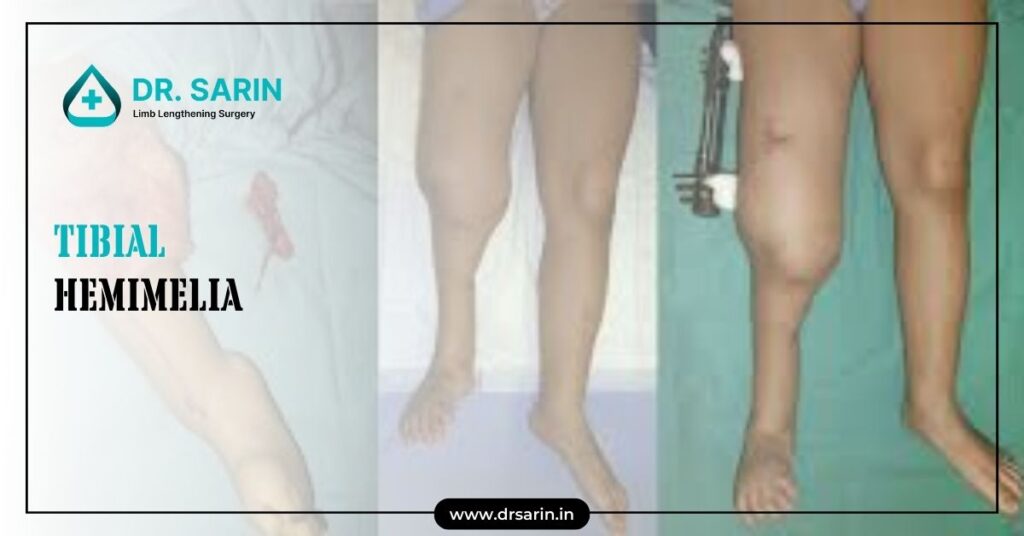
Tibial hemimelia is a rare congenital condition characterized by the partial or complete absence of the tibia, the larger of the two bones in the lower leg. This condition can lead to significant functional challenges and limb deformities. One of the primary treatments for tibial hemimelia is limb lengthening surgery, which aims to address the discrepancies in limb length and improve overall function and mobility. What is Tibial Hemimelia? Tibial hemimelia is a developmental anomaly where the tibia, the main weight-bearing bone in the lower leg, is either missing or severely underdeveloped. This condition often results in a noticeable difference in limb length, difficulty walking, and potential misalignment of the knee and ankle joints. The severity of tibial hemimelia can vary, and the condition may also be associated with other skeletal deformities and complications. Diagnosing Tibial Hemimelia Diagnosis of tibial hemimelia typically involves a combination of clinical examination and imaging studies. X-rays and MRI scans are used to assess the extent of tibial absence and to plan appropriate treatment. Early diagnosis is crucial for determining the best action and improving long-term outcomes. Limb-Lengthening: A Solution for Tibial Hemimelia Limb-lengthening is a specialized surgical procedure designed to address limb length discrepancies and improve functionality in patients with tibial hemimelia. The surgery involves gradually extending the bone and soft tissues to correct limb length discrepancies and enhance overall leg function. 1. The Procedure: This surgery begins with the insertion of an external or internal fixation device. The most commonly used method is the Ilizarov apparatus, an external fixator that allows for precise adjustment and gradual lengthening of the bone. Alternatively, internal devices such as lengthening nails may be used, which are implanted inside the bone. Once the fixation device is in place, the tibia is carefully cut (osteotomy) to create a gap. The fixator is then adjusted regularly to lengthen the bone gradually over time. This process typically takes several months and requires careful monitoring to ensure proper bone growth and alignment. 2. Benefits: The primary benefits of limb surgery for patients with tibial hemimelia include: 3. Post-Surgical Rehabilitation: Recovery from surgery involves a comprehensive rehabilitation program to ensure optimal results. Physical therapy is crucial to help regain strength, flexibility, and function in the affected leg. Patients are typically advised to avoid weight-bearing activities during the early stages of recovery and gradually increase activity levels as healing progresses. 4. Potential Risks and Considerations: While Dr. Sarin can offer significant benefits, it has risks. Potential complications include infection, delayed bone healing, and joint stiffness. Patients must work closely with their healthcare team to manage these risks and follow post-surgical care instructions carefully. Conclusion Tibial hemimelia presents significant challenges, but advances in medical treatments offer promising solutions. By addressing limb length discrepancies and improving functional outcomes, surgery can significantly enhance the quality of life for individuals with tibial hemimelia. Early diagnosis and a tailored treatment approach are key to achieving the best possible results and ensuring a successful outcome.
Fibular Hemimelia

Fibular Hemimelia is a congenital limb deficiency characterized by the partial or complete absence of the fibula, the smaller of the two bones in the lower leg. This condition can lead to various orthopaedic challenges, including limb length discrepancy, foot deformity, and knee deformity. Understanding these aspects is crucial for managing and treating the condition effectively. Limb Length Discrepancy One of the most common issues associated with Fibular Hemimelia is limb length discrepancy. The absence of the fibula often results in a shorter leg on the affected side. This discrepancy can cause several functional problems: Foot Deformity Fibular Hemimelia can also lead to various foot deformities due to the lack of support and stability provided by the fibula: Knee Deformity The absence of the fibula can also impact the knee joint, leading to various deformities: Extramedullary Internal Limb Lengthening Extramedullary Internal Limb Lengthening (EMILL) is a surgical procedure used to address limb length discrepancies, including those caused by Fibular Hemimelia. This technique involves: Conclusion Fibular Hemimelia presents several challenges, including limb length discrepancy, foot deformity, and knee deformity. Understanding these issues and exploring effective treatment options, such as Extramedullary Internal Limb Lengthening, is crucial for managing the condition and improving the quality of life. Early diagnosis and intervention can significantly enhance outcomes, helping individuals with Fibular Hemimelia achieve better mobility and functionality. For comprehensive management and treatment, consulting with a specialized orthopaedic professional is essential.
Congenital Femoral Deficiency

Congenital Femoral Deficiency (CFD) is a rare and complex condition that affects the development of the femur, the thigh bone. It can vary in severity, leading to different levels of leg length discrepancy, joint instability, and mobility challenges. Understanding CFD, its causes, symptoms, diagnosis, treatment, and associated risks is crucial for managing this condition effectively. What is Congenital Femoral Deficiency? Congenital Femoral Deficiency is a congenital disability where the femur bone is underdeveloped or absent. This condition can result in a shorter femur, malalignment of the hip and knee joints, and differences in leg length. The severity of CFD can range from mild shortening of the femur to significant deformities that affect walking and overall mobility. What Causes Congenital Femoral Deficiency? The exact cause of Congenital Femoral Deficiency is not fully understood, but it is believed to result from a combination of genetic and environmental factors. Some potential causes and risk factors include: What are the Symptoms of Congenital Femoral Deficiency? The symptoms of Congenital Femoral Deficiency can vary widely depending on the condition’s severity. Common symptoms include: How is Congenital Femoral Deficiency Diagnosed? Diagnosis of Congenital Femoral Deficiency typically involves a combination of clinical evaluation and imaging studies: How is Congenital Femoral Deficiency Treated? The treatment of Congenital Femoral Deficiency depends on the severity of the condition and the patient’s specific needs. Treatment options may include: What are the Risks of Congenital Femoral Deficiency? While treatment can significantly improve outcomes for individuals with Congenital Femoral Deficiency, there are potential risks and complications to consider:
Extramedullary Internal Limb Lengthening
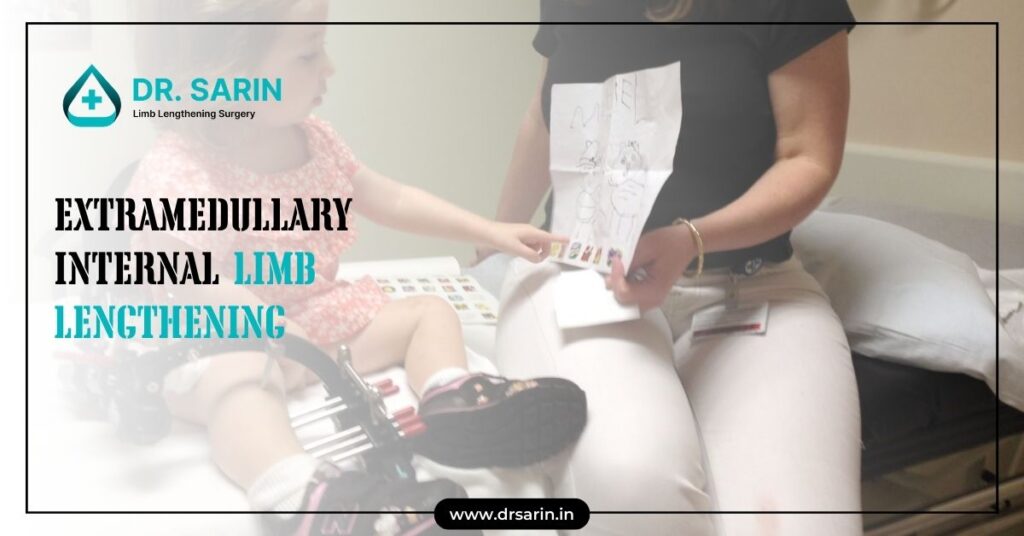
Abstract Extramedullary Internal Limb Lengthening (EMILL) represents an advanced surgical approach to address limb length discrepancies and deformities. This technique utilizes external devices and internal mechanisms to lengthen bones, gradually improving functional outcomes and aesthetic results. This overview provides insights into the indications, methods, postoperative management, and overall effectiveness of EMILL. Indications For Extramedullary Lengthening Extramedullary lengthening is indicated for various conditions, including congenital limb length discrepancies, post-traumatic deformities, and certain orthopedic conditions where conventional methods may not be suitable. It is particularly beneficial in cases where internal lengthening devices are preferred due to their minimal invasiveness and better patient compliance. Femur EMILL is typically employed in cases of congenital or post-traumatic femoral shortening. The technique allows for gradual and controlled lengthening of the femur, which can enhance functional outcomes and reduce the risk of complications compared to traditional methods. Tibia EMILL of the tibia is often indicated for similar reasons as femoral lengthening, including congenital discrepancies or trauma. The approach focuses on achieving optimal alignment and lengthening while minimizing complications such as bone deformities or joint stiffness. Other Considerations Other considerations in EMILL include patient selection, the risk of complications such as infection or nonunion, and the potential need for adjunctive therapies like physiotherapy to maintain functional outcomes. Preoperative planning and patient education are crucial for successful outcomes. Surgical Technique: Extramedullary Internal Limb Lengthening (EMILL) of the Femur The EMILL technique for the femur involves implanting an internal lengthening device along the extramedullary axis of the femur. The device is adjusted gradually to lengthen the bone while monitoring for proper alignment and regeneration. Surgical precision and postoperative care are vital to ensure successful outcomes. Surgical Technique: EMILL of the Tibia A similar approach is used in tibial lengthening, where an internal lengthening device is placed extramedullary. The surgical technique involves careful tibia alignment and gradual lengthening, ensuring stability and minimizing complications. Postoperative monitoring is essential for assessing bone healing and alignment. Postoperative Routine Postoperative care includes regular follow-up appointments to monitor bone lengthening, assess for complications, and adjust the lengthening device as needed. Pain management, physical therapy, and adherence to weight-bearing restrictions are key components of the postoperative routine. Pearls and Pitfalls Pearls: Careful preoperative planning, precise surgical technique, and thorough patient education can significantly enhance outcomes. Regular follow-up and early intervention for complications are also crucial. Pitfalls: Common pitfalls include inadequate lengthening, misalignment, and infection. Rigorous monitoring and timely intervention can mitigate these risks. Methods EMILL methods involve internal lengthening devices, precise surgical techniques, and gradual lengthening protocols. Advanced imaging and surgical planning tools are utilized to optimize outcomes. Results Results from EMILL procedures generally show favorable outcomes regarding limb lengthening, functional improvements, and patient satisfaction. Studies indicate that the technique effectively addresses limb length discrepancies with minimal complications. Outcomes The outcomes of EMILL include successful lengthening of the affected limb, improved function, and high patient satisfaction. Long-term results often show stable and functional limb lengthening with minimal adverse effects. Discussion EMILL has revolutionized limb lengthening by offering a less invasive alternative to traditional methods. The technique’s benefits include reduced postoperative discomfort and improved aesthetic outcomes. However, it requires careful patient selection and management to achieve optimal results. Conclusions Extramedullary Internal Limb Lengthening (EMILL) is a promising technique with significant advantages over conventional methods for addressing limb length discrepancies. Its effectiveness and advancements in surgical technology make it a valuable option in modern orthopedic practice. Ongoing research and clinical experience will continue to refine techniques and improve outcomes for patients undergoing limb-lengthening procedures.
Average Height of UK 2024
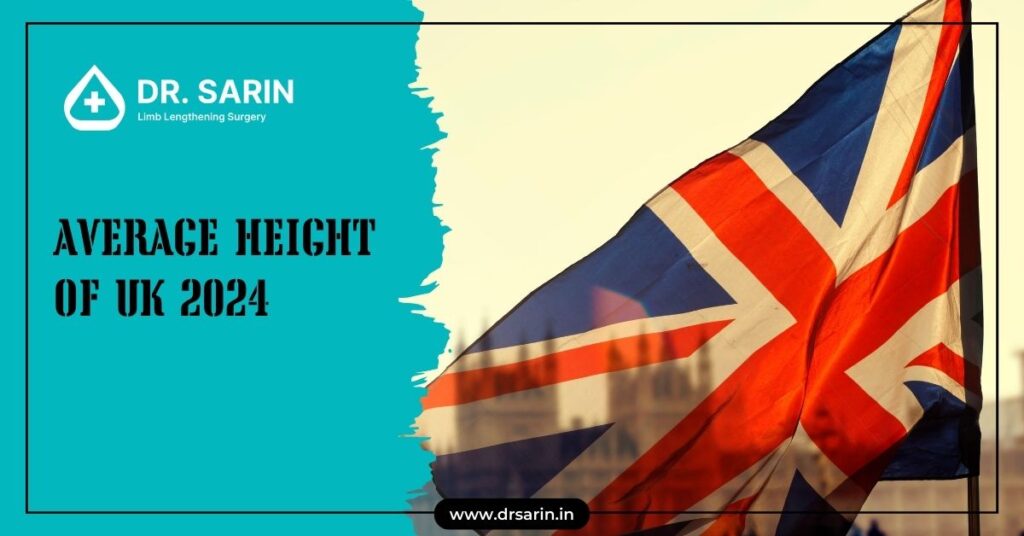
Understanding the average height of a population can provide insights into the general health and nutritional standards of a country. In the UK, average heights have been steadily increasing over the decades due to better living conditions, improved healthcare, and more balanced nutrition. What is the Average Height in the UK? As of 2024, the average height for adults in the UK is as follows: These averages reflect a slight increase over the past few decades due to the factors above. Factors Affecting Average Height in the UK Several factors contribute to the average height of individuals in the UK: Historical Trends in Height Historical data shows that the average height of individuals in the UK has increased over the past century. This can be attributed to improvements in living standards, healthcare advancements, and better nutrition. Regional Variations There can be regional variations in average height within the UK, influenced by local diets, socioeconomic factors, and genetic diversity. However, the national averages provide a general picture of the height trends in the country. Understanding these statistics and the factors that influence them can help in formulating policies aimed at improving public health and nutrition, ensuring that the positive trend in average height continues.
Average Height of USA 2024

Understanding the average height of populations can provide insights into health, nutrition, and genetic factors. Let’s delve into the average heights across different regions of the Americas in 2024. Average Height of Latin America In Latin America, average heights vary significantly among countries due to genetic, nutritional, and socio-economic factors. Generally, Latin American countries show considerable diversity in height. Countries like Venezuela and Colombia are known for having relatively taller populations, while others like Guatemala and Honduras have shorter average heights. Average Height of North America North America is characterized by a higher average height, influenced by genetics, diet, and healthcare. Here’s a breakdown of the average heights in the United States, Canada, and Mexico: 1. United States: 2. Canada: 3. Mexico: Average Height of Central America Central America has a diverse range of heights, with some countries showing shorter averages than their northern and southern neighbors. Countries like Panama and Costa Rica are on the taller end, whereas countries like Nicaragua and Guatemala tend to have shorter average heights. Average Height of the Caribbean The Caribbean islands exhibit various heights, influenced by the region’s diverse genetic pool and nutritional standards. Countries such as Barbados, Trinidad, and Tobago have some taller averages, while others, like Haiti and the Dominican Republic, show slightly shorter averages.
Body Mass Index
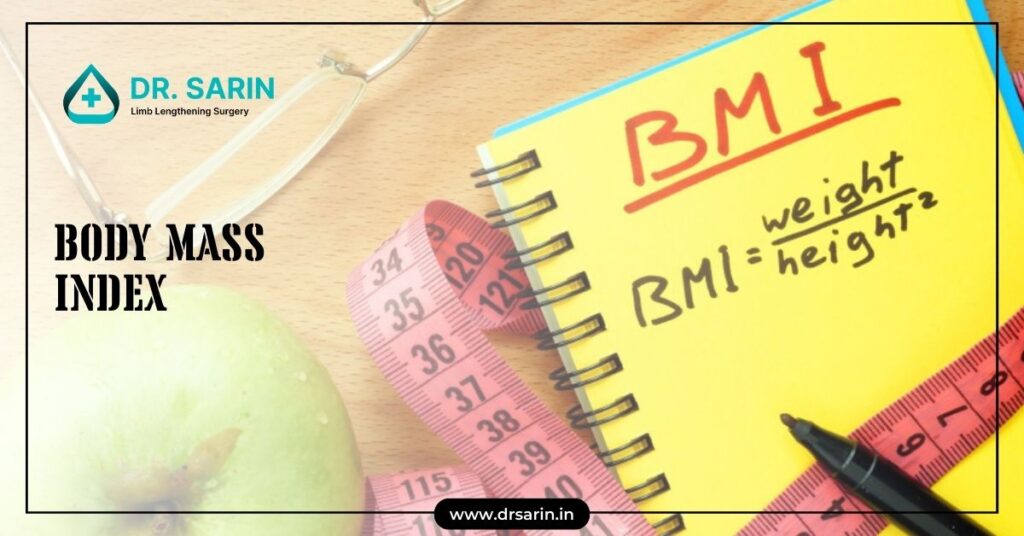
Body Mass Index (BMI) is a simple and widely used method to assess whether a person has a healthy body weight for a given height. It provides a numerical value derived from an individual’s weight and height, and it helps categorize them into different weight status categories. How to Calculate Your Body Mass? Calculating BMI is straightforward and involves the following formula: BMI=weight (kg)height (m)2\text{BMI} = \frac{\text{weight (kg)}}{\text{height (m)}^2}BMI=height (m)2weight (kg) Alternatively, for those using pounds and inches, the formula is: BMI=weight (lb)×703height (in)2\text{BMI} = \frac{\text{weight (lb)} \times 703}{\text{height (in)}^2}BMI=height (in)2weight (lb)×703 For example, if you weigh 70 kg and are 1.75 meters tall: BMI=701.752≈22.86\text{BMI} = \frac{70}{1.75^2} \approx 22.86BMI=1.75270 ≈22.86 This calculation helps to determine your BMI, which can then be interpreted using standard BMI categories. How to Interpret Body Mass Index? BMI categories, as defined by the World Health Organization (WHO), help to interpret BMI values: Each category is associated with different health risks. For instance, being underweight might indicate malnutrition, while being overweight or obese increases the risk of chronic diseases like heart disease, diabetes, and hypertension. Guidelines for Keeping a Healthy Body Mass Index Maintaining a healthy BMI is crucial for overall health and well-being. Here are some guidelines to help you achieve and sustain a healthy BMI: Balanced Diet Regular Physical Activity Monitor Weight Healthy Habits Avoid Unhealthy Behaviors By following these guidelines, you can maintain a healthy BMI and reduce the risk of health complications associated with being underweight or overweight. Regular monitoring and adjustments to your diet and lifestyle are key to long-term success.
Height Growth Plates: When Do Growth Plates Close?
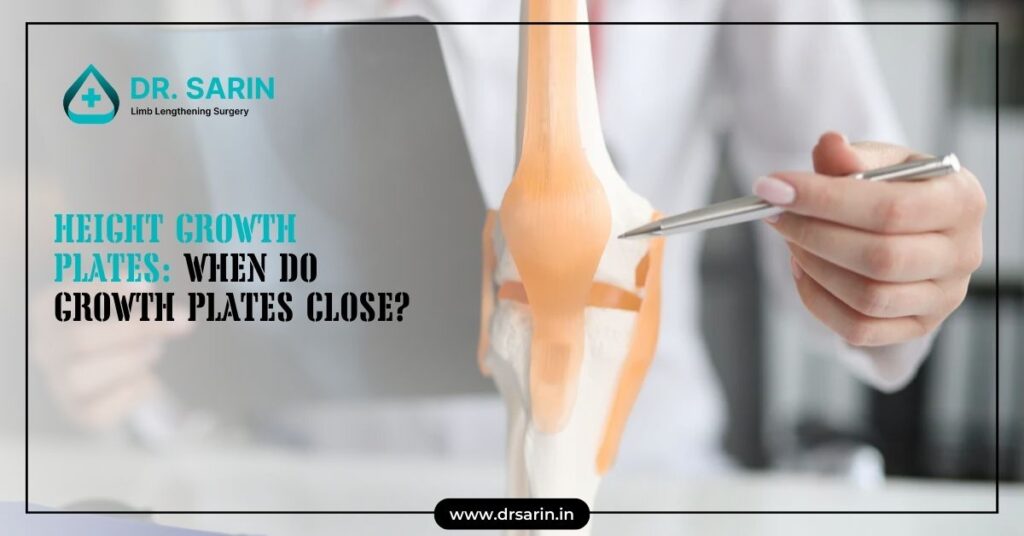
Growth or epiphyseal plates are areas of developing cartilage tissue near the ends of long bones. They are crucial during the growth and development phase as they determine the future length and shape of the mature bone. Understanding how growth plates work and when they close can provide insight into height growth and the potential for height increase after they have closed. Here’s How Growth Plates Work and Their General Importance During the Period of Height Increase: Growth plates are the last portion of bones to harden (ossify). As a person grows, these plates produce new bone tissue, contributing to the lengthening of bones and, consequently, a person’s overall height. Various factors, including genetics, nutrition, and hormonal levels, regulate the process. Growth plates are found in both boys and girls, but they close at different times depending on sex and individual development rates. Do Growth Plates Reopen? Once growth plates close, they do not reopen. The closure of growth plates signifies the end of height growth. This typically occurs after puberty when the levels of growth hormones decrease and the plates undergo ossification, turning into solid bone. For girls, this usually happens between ages 14 to 16, while for boys, it is around 16 to 18 years old, though it can vary based on individual differences. When Do We Know The Growth Plate Has Closed? Determining if growth plates have closed involves medical imaging, such as X-rays. A doctor can examine the growth plates in the body’s long bones (such as the femur or tibia) to see if they have ossified. When the growth plates appear as solid bone on an X-ray, they have closed. Physical indicators, such as the cessation of height increase over time, also suggest that growth plates may have closed. What Can Be Done to Increase Height After the Closure of Growth Plates? Once growth plates close, traditional methods of increasing height are no longer effective. However, several approaches can help optimize posture and give the appearance of added height: 1. Nutrition and Exercise: 2. Posture Improvement: 3. Orthopaedic and Surgical Methods: 4. Footwear: While height is primarily determined by genetics and the closure of growth plates, maintaining a healthy lifestyle and good posture can contribute to the best possible presentation of one’s height. Understanding growth plates and their function is essential for anyone looking to maximize their height potential or understand their growth patterns. Once the growth plates close, height increase through natural means becomes impossible, and any interventions should be considered with careful thought and professional guidance.
Medical Lengthening
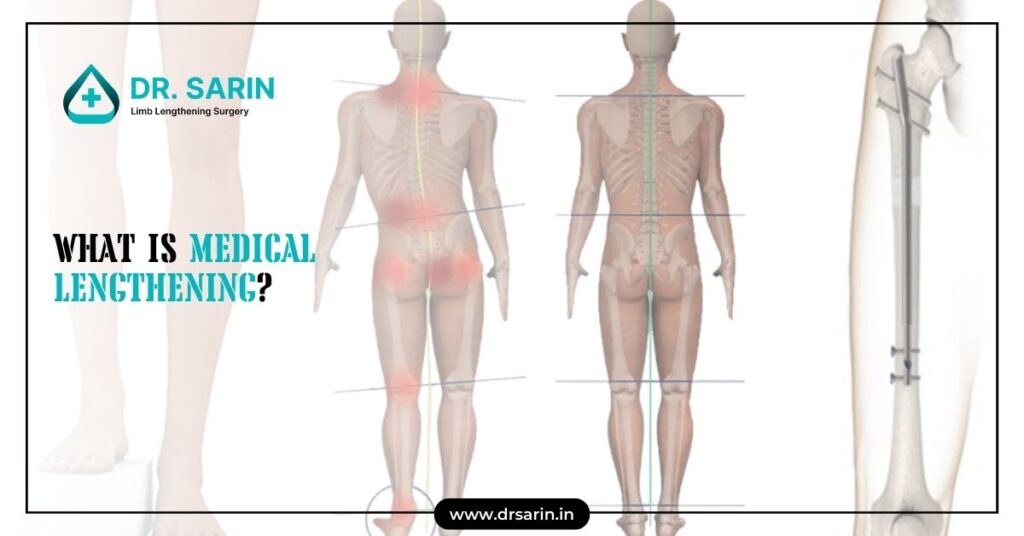
What is Medical Lengthening? Medical lengthening, often referred to as limb lengthening, is a surgical procedure aimed at increasing the length of bones in the limbs. This process is typically used to treat discrepancies in limb length caused by congenital conditions, injuries, or diseases. The procedure involves the use of an external fixator, such as the Ilizarov apparatus, or an internal device that gradually separates the bone segments, allowing new bone tissue to form and fill in the gap. Medical Necessity Medical lengthening is performed for several medically necessary reasons: Evaluation and Treatment Decisions The decision to proceed with medical lengthening involves a comprehensive evaluation: Acceptance within the Medical Community Limb-lengthening procedures have gained acceptance within the medical community due to advancements in surgical techniques and technology. The Ilizarov method, developed in the 1950s, revolutionized limb lengthening and has since been widely adopted. Modern techniques, such as the PRECICE nail, allow for more controlled and less invasive lengthening processes. Research and clinical outcomes support the efficacy and safety of these procedures when performed by experienced surgeons. Risks and Potential Complications As with any surgical procedure, medical lengthening carries risks and potential complications: Conclusion Medical lengthening is a critical procedure for addressing significant limb length discrepancies and improving patient function and quality of life. While it involves considerable commitment and carries risks, advancements in surgical techniques and comprehensive care have made it a viable option for many patients. Thorough evaluation and a multidisciplinary approach are essential to ensure the best outcomes.

